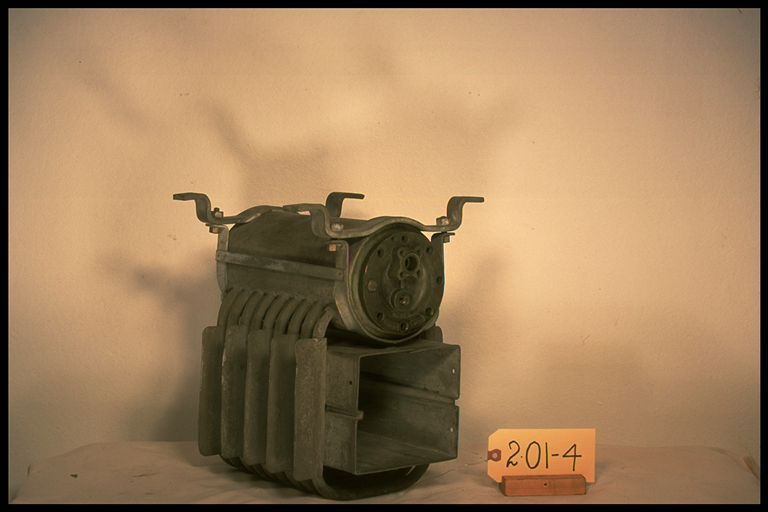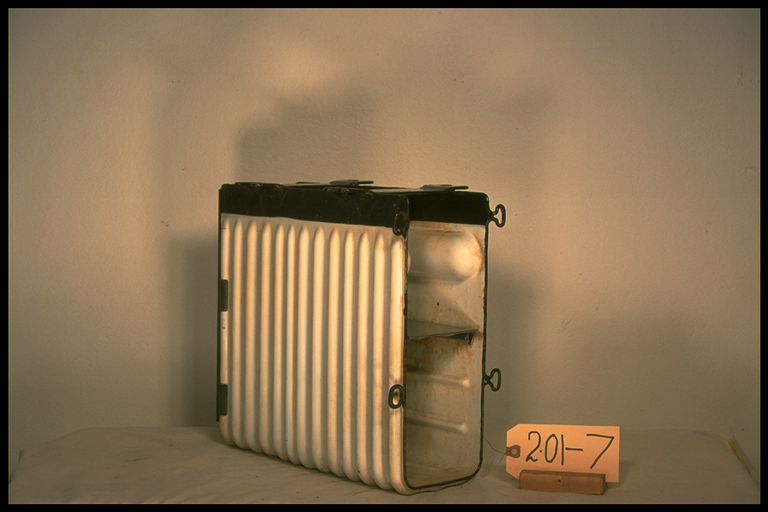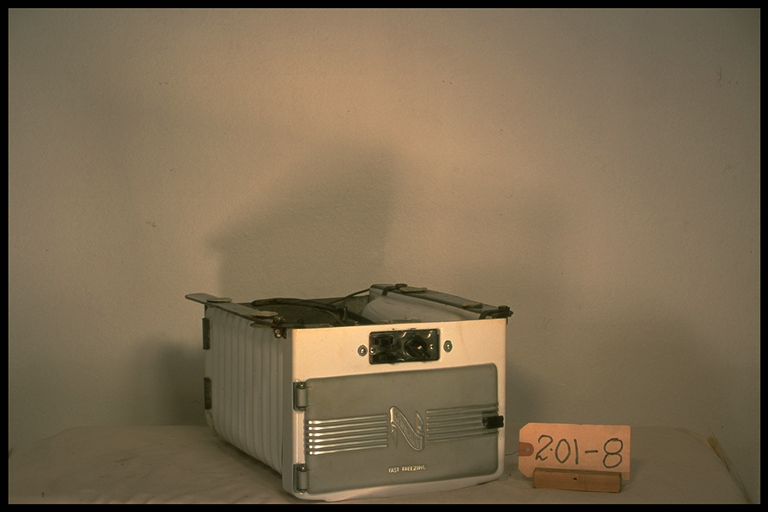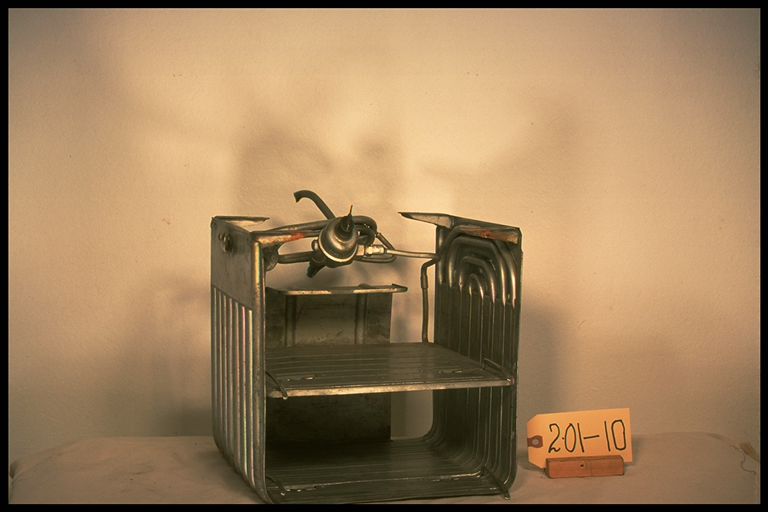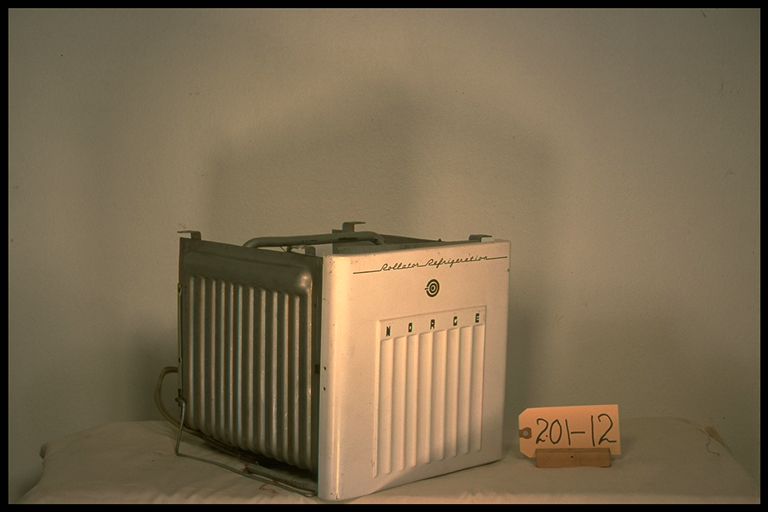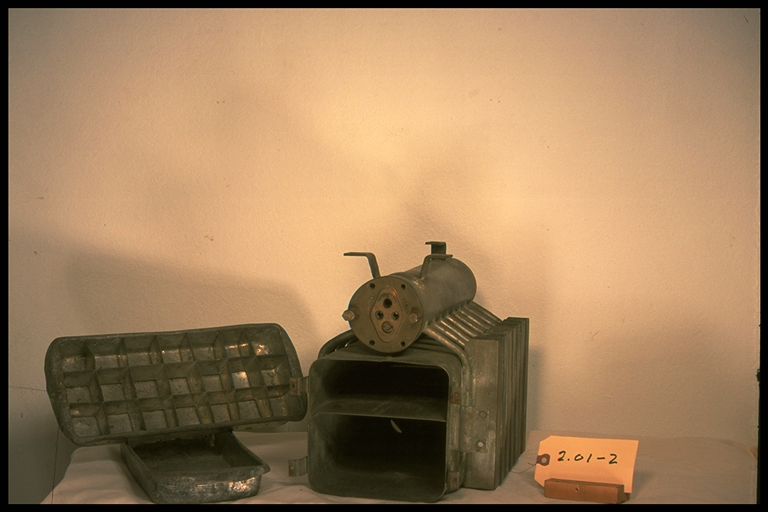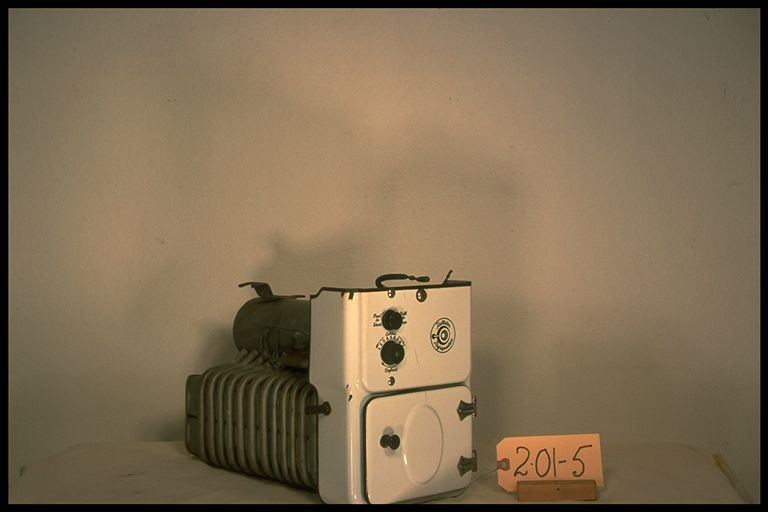2.01-3: Kelvinator 1930 Two Tray, Icemaker with Low-Side Float
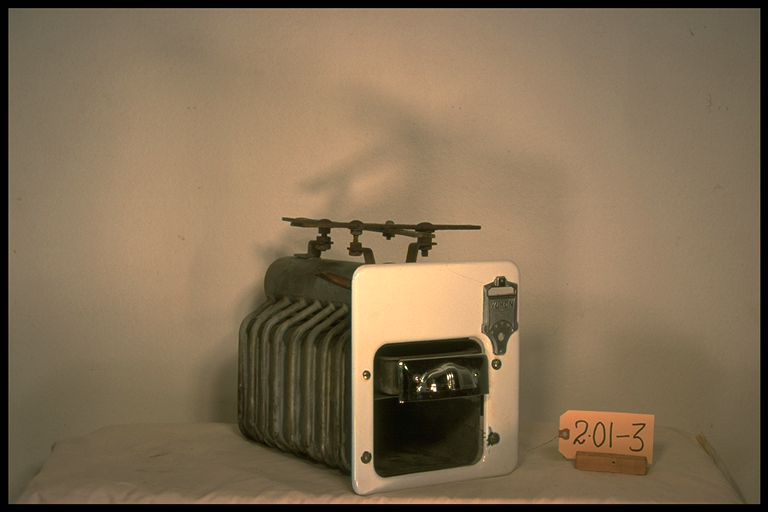
| HHCC Accession No. 2003.012 | HHCC Classification Code: 2.01-3 |
|---|
Description:
Two tray, icemaker evaporator with low-side float; white porcelain front panel and chromium control mounting, a cooling unit up-scaled for use on Kelvinator’s ‘Yukon’, a deluxe household cabinet Refrigerator, Kelvinator,1930
Group:
2.01 Refrigerating and Air Conditioning Evaporators - Household
Make:
Kelvinator
Manufacturer:
Kelvinator of Canada
Model:
CT31X
Serial No.:
17675C
Size:
8x 15x 13”h
Weight:
15 lbs
Circa:
1930
Rating:
Exhibit Quality, Rare
Patent Date/Number:
Provenance:
From York County (York Region) Ontario, once a rich agricultural hinterlands, attracting early settlement in the last years of the 18th century. Located on the north slopes of the Oak Ridges Moraine, within 20 miles of Toronto, the County would also attract early ex-urban development, to be come a wealthy market place for the emerging household and consumer technologies of the early and mid 20th century.
This artifact was discovered in the 1950’s in the used stock of T. H. Oliver, Refrigeration and Electric Sales and Service, Aurora, Ontario, an early worker in the field of agricultural, industrial and consumer technology.
Type and Design:
Flooded evaporator with low-side float
Construction:
Constructed in tinned, heavy copper plate, with brass float chamber, brass, flange mounted float assembly, calibrated for S02 refrigerant, 8 pass, 3/8’ copper distributing tubes, with right side box fin, for left side cabinet mounting.
Material:
Special Features:
White porcelain front plate with chromium control plate mounting, ice cube trays with deep chromium plated front plates and handles, reflective not only the increasing sophistication available to the refrigeration industry (in terms of materials and manufacturing techniques), but also of the public desire for clean, crisp, easy to clean modern looking surfaces ‘ a far cry from the icebox the nation wished now to leave behind.
Accessories:
: Equipped with 2 formed, heavy copper sheet, tinned ice cube trays with one removable ice cube grid, and tinned strap steel hanger bracket
Capacities:
Performance Characteristics:
Operation:
Control and Regulation:
Targeted Market Segment:
The ‘Yukon’ was Kelvinator’s bid to capture and hold the attention of the high-end market in the 1930’s, making use of modern styling, new accessories and amenities. Kelvinator could see that other manufactures, the ‘me-too’ crowd, were now beginning to crowd into the field, e.g., Frigidaire, a field held to date by the founders of the industry. The pattern is a classic one in which early innovators find it difficult to maintain the initiative in an increasingly crowded, competitive space, and look often unsuccessfully for ways of doing so.
Consumer Acceptance:
Merchandising:
Market Price:
Technological Significance:
The technological significance of the evaporator in a mechanical refrigeration system lies in its ability to evaporate liquid refrigerant (allowing it to absorb latent heat and thus perform useful cooling). In the public mind, however, the useful work was more simply that of cooling.
This lead astute manufactures to popularise the use of the term ‘cooling unit’ in place of evaporator. It was the term adopted by the industry in the early years, as it attempted to connect with the human experience of the times to better promote its wares, gaining market share in the embryonic years of Canada’s emerging consumer society. (See examples in early sale literature from the Kelvinator Co. of Canada)
Human experience and the social culture of the 1920’s also associated useful cooling with the melting of ice. Historically manufactures successfully played to this sense of public understanding by further marketing cooling units as icemakers. By this means they appealed to wide spread cultural understandings of how things got cooled, through the controlled melting of ice (the popular Canadian icebox of the 1920’s and 30’s). In a peculiar twist, it was often the job of the refrigeration sales or service man to explain to the homemaker that it was not really the ice in the ice cube trays that cooled the refrigerator, but the motor and compressor underneath.
In the 1920’s manufactures of mechanical refrigerators for the home appealed to the consumer public by promoting ice and ice cream as the new consumables, the new food sensations available for all those sufficiently affluent to enjoy the experience. Promotional literature focused on the pleasant sensation of ice cold beverages and on ice cream making at home ‘ using the latest cooling unit. A recipe and food life style book came with the refrigerator for the edification and instruction of the homemaker (See examples in early sale literature from the Kelvinator Co. of Canada). Ice and ice cream making in the home was, in fact, one of the significant, new ‘Gee whiz’, household technologies of the times.
This specimen demonstrates the way the basic technology of the cooling units of the period was gentrified. What was being sold was much less a fully functioning refrigerated household appliance than style, a technique discovered and successfully applied by auto makers at about the same time.
Industrial Significance:
Socio-economic Significance:
Socio-cultural Significance:
Donor:
G. Leslie Oliver, The T. H. Oliver HVACR Collection
HHCC Storage Location:
Tracking:
Bibliographic References:
See Kelvinator sales, service and engineering manuals See Kelvinator form #3214, issued Aug 15, 1930
